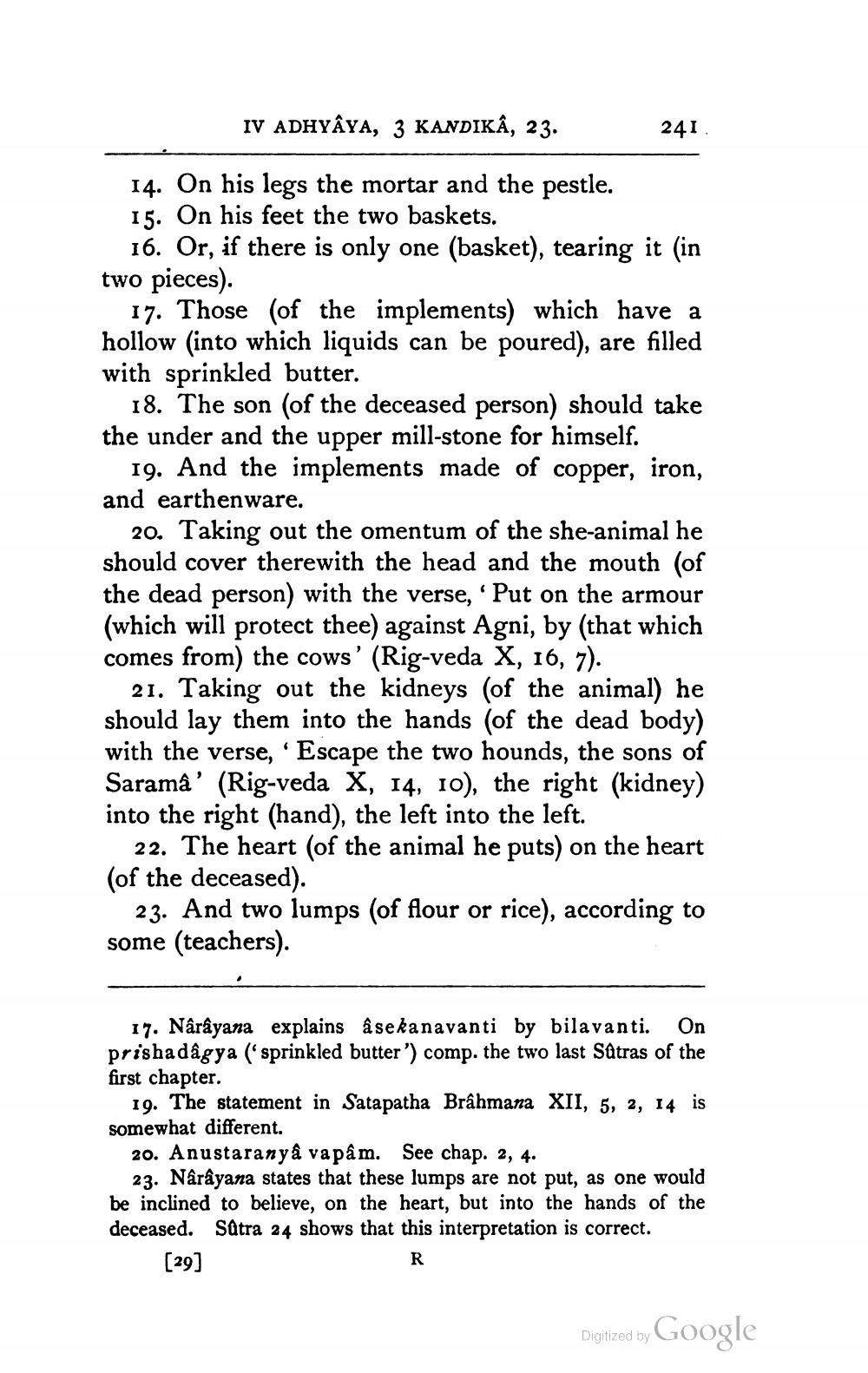________________
IV ADHYAYA, 3 KANDIKÂ, 23.
241
14. On his legs the mortar and the pestle. 15. On his feet the two baskets.
16. Or, if there is only one (basket), tearing it (in two pieces).
17. Those (of the implements) which have a hollow (into which liquids can be poured), are filled with sprinkled butter.
18. The son (of the deceased person) should take the under and the upper mill-stone for himself.
19. And the implements made of copper, iron, and earthenware.
20. Taking out the omentum of the she-animal he should cover therewith the head and the mouth of the dead person) with the verse, 'Put on the armour (which will protect thee) against Agni, by (that which comes from) the cows' (Rig-veda X, 16, 7).
21. Taking out the kidneys (of the animal) he should lay them into the hands (of the dead body) with the verse, 'Escape the two hounds, the sons of Saramâ' (Rig-veda X, 14, 10), the right (kidney) into the right (hand), the left into the left.
22. The heart (of the animal he puts) on the heart (of the deceased).
23. And two lumps (of flour or rice), according to some (teachers).
17. Nârâyana explains á sekanavanti by bilavanti. On prishadâgya (sprinkled butter ') comp. the two last Satras of the first chapter.
19. The statement in Satapatha Brâhmana XII, 5, 2, 14 is somewhat different.
20. Anustaranyå vapâm. See chap. 2, 4.
23. Narayana states that these lumps are not put, as one would be inclined to believe, on the heart, but into the hands of the deceased. Sätra 24 shows that this interpretation is correct. [29]
R
Digitized by Google




